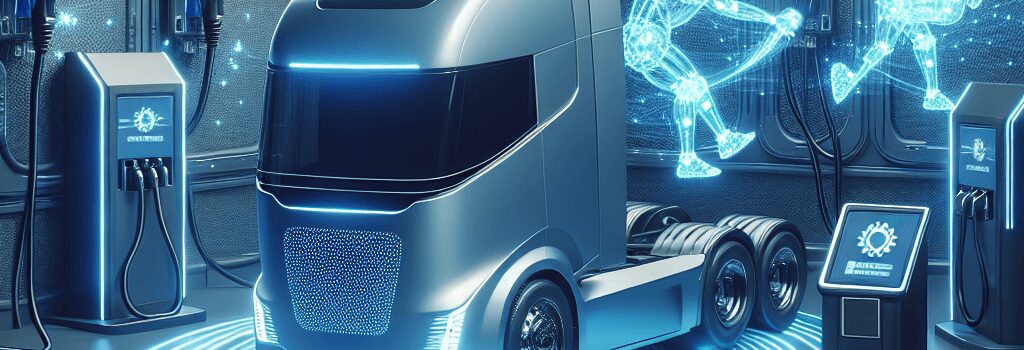Hands-Free EV Charging for Autonomous Freight

The convergence of autonomous driving and electric vehicles (EVs) has revolutionized logistics, but one manual step remains: the act of plugging in. At a test facility in Sweden, Rocsys and Einride have demonstrated a fully hands-off charging solution for driverless electric trucks, paving the way toward 24/7, emissions-free freight operations.
1. The State of Automation in Modern Ports
Ports are critical nodes in the global supply chain, handling upwards of 90% of world trade by volume. Leading facilities such as APM Terminals in Rotterdam have deployed:
- Automated stacking cranes (ASC) capable of lifting 30-ton containers.
- Automated guided vehicles (AGVs) with 360° LiDAR and RTK-GNSS for precise positioning within ±2 cm.
- Terminal operating systems (TOS) integrating via OPC UA and ETSI M2M messaging.
“Automating container handling reduces human risk in an environment five times more dangerous than average,” says Crijn Bouman, CEO and co-founder of Rocsys.
Yet, even these state-of-the-art facilities still rely on human labor to recharge electric vehicles, creating a bottleneck in efficiency and safety.
2. The Person-Free Plug: Rocsys’ Robotic Steward
Since 2017, the Netherlands-based startup Rocsys has focused on eliminating the human dependency in charging EVs. Their robotic steward is a 6-degree-of-freedom arm equipped with an AI-driven vision system:
- Stereo cameras (4 K resolution) and time-of-flight sensors map the charge port within 5 mm accuracy.
- A deep-learning model (trained on >50,000 images) recognizes plug types—CCS, CHAdeMO, GB/T—and charge port geometries.
- Force-feedback and torque sensors (±0.1 Nm resolution) ensure secure, damage-free insertion and extraction of connectors rated up to 500 A / 1,000 V DC.
Rocsys’ system supports both open and manual flap designs. For vehicles with spring-loaded port covers, a specialized “finger assembly” autonomously unlatches, inserts the connector, and reseals the flap—requiring zero vehicle modification.
3. Einride’s Autonomous Electric Transport (AET) Vehicles
Einride, headquartered in Stockholm, operates cabless, Level 4 self-driving electric trucks. Key specifications include:
- Battery capacity: 200–300 kWh (Modular Li-ion pack with NMC 811 cells).
- Drivetrain: Dual 250 kW in-wheel permanent-magnet synchronous motors.
- Range: 200 km on highway cycles; 150 km under full load (30 t GVW).
These vehicles navigate using a combination of LiDAR, radar, GPS, inertial measurement units (IMUs), and HD maps. Operators in remote control towers oversee multiple trucks via 5G or private LTE networks, intervening only when the path is obstructed or emergency stops are required.
“With automated charging, these trucks could run continuously—only pausing to top off batteries—improving utilization by over 30%.” —Henrik Green, GM of Autonomous Technology, Einride
4. Technical Architecture and Integration
4.1 Software and Communications
Integration between Rocsys and Einride leverages standard industrial and cloud-native protocols:
- ROS 2 middleware for local sensor fusion and robotic arm control.
- MQTT over TLS for telemetries and charging status, with message latency under 50 ms.
- AWS IoT Core and Azure Digital Twins for fleet monitoring, predictive maintenance, and over-the-air (OTA) updates.
4.2 Safety, Compliance, and Standards
Safety-critical operations comply with:
- ISO 26262 for functional safety of automotive systems.
- ISO 15118 Plug & Charge for secure authentication and billing.
- UL 2251 and IEC 61851 for EV conductive charging systems.
Robotic motions are monitored by redundant emergency stop circuits and safety controllers with SIL 3 certification.
5. Economic and Environmental Impact
Electrified heavy-duty transport addresses roughly 7% of global CO₂ emissions. By automating charging:
- Operational costs drop by 15–20% through reduced labor and dwell times.
- Vehicle utilization increases by up to 40%, lowering total cost of ownership (TCO).
- Emissions-free operations align with EU Green Deal and California’s Advanced Clean Fleets rule.
“The ROI on robotic charging deployments can be under two years for high-utilization fleets,” notes logistics analyst Dr. Maria Fernandez of Global Transport Analytics.
6. Future Outlook and Challenges
Scaling from single-truck demonstrations to nationwide fleets involves:
- Standardization of charge port designs—eliminating manual flaps in favor of electric doors.
- Robust cybersecurity to guard against intrusion via over-the-air interfaces.
- Expanded V2G (Vehicle-to-Grid) capabilities, enabling trucks to feed energy back during peak demand.
Closed logistics centers and ports provide controlled environments to refine AI perception under varying lighting, weather, and occlusion conditions before deploying on open roads.
7. Conclusion
By merging Rocsys’ AI-driven robotic charger with Einride’s autonomous electric trucks, the logistics industry is poised to remove the last human link in electrified freight. This innovation promises safer, more efficient, and sustainable operations—ushering in a new era of fully autonomous, emissions-free transport.